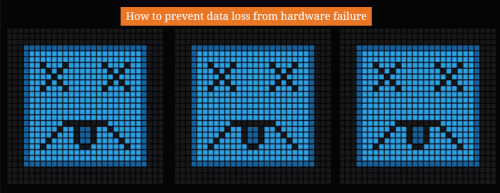


Hardware damage and system malfunctions are among the top causes of data loss. And when they happen, they can bring your operations to a screeching halt.
But while system errors are inevitable, there are ways to ensure you never lose any data – even if all your servers are toast. Here’s how to do it:
Now let’s dig right into the solutions and best practices for preventing these disasters in the first place.
A business continuity plan (BCP) serves several purposes. But its most important objective is ensuring that your business can continue operating after a disruptive event.
Sometimes referred to as a disaster recovery plan, your BCP should outline the steps and systems for responding to all types of disasters: not just hardware failure and system malfunction, but also natural disasters, malware and even human error.
Think of your BCP like a roadmap for recovery. It should state exactly how the business will attempt to recover from data loss and the procedures for getting everything back up and running again. Additionally, the document should contain a thorough risk assessment and a business impact analysis. These will help identify your potential weaknesses and prioritize your continuity planning.
Don’t want data loss? Then make sure you always have a backup. It’s that simple.
If your business handles any kind of data that is important to your business—spreadsheets, email, Word documents, software, CRM data, and any other data stored on your servers—then backing up your data is a must.
We’re not talking about flimsy thumb drives and Dropbox folders, either.
Businesses today must ensure they’re regularly backing up all their data and that the data can be recovered rapidly in an emergency. This is pretty much impossible without a 360-degree business continuity & disaster recovery solution.
“But wait!” you say. “If my hard drives are dead, how will I access the backup?”
Our answer:
Today’s best BC/DR systems use an approach called “hybrid cloud backup.” This means your data is backed up in two places: on site and in the cloud.
So if your server drives experience catastrophic failure, you’re not up creek without a paddle. You’ve still got a backup in the cloud, allowing you to access all your files in seconds. And if you can virtualize it (see below), even better: you’ll be able to boot up the backup as a virtual machine and continue using your critical applications until the on-site systems are repaired.
Your recovery point objective (RPO) dictates how old your data can be if you need to recover a backup. Or, put another way, it’s the goal for how recently your last backup should have been performed, in order to avert a major disruption from loss of data.
For example, let’s say your RPO for critical files and application data is “1 hour.” In that case, your last backup should never be more than 1 hour old. In the event of drive failures, you’d only lose a maximum of one hour’s worth of data – not too bad, depending on the size of your business.
Your RPO is based on several factors, most notably: the business impact of prolonged data loss. Accordingly, your RPO should be determined as part of your business continuity plan. During your business impact analysis, if you discover that 12 hours of data loss would be devastating to your operations, then you need to set a much more aggressive RPO.
Note: RPO should not be mistaken with RTO, which is your “recovery time objective” – although the two terms are often intertwined. RTO dictates the maximum amount of allowable time for recovery before things go really bad.
Instead of being confined to the traditional way of designing and integrating compute, storage and network resources, you can take advantage of our preconfigured VxRail™ solution that deploys quickly and meets any Hyper-converged Infrastructure (HCI) use case, including support for the most demanding workloads and applications.
As the only fully integrated, preconfigured, and pre-tested VMware hyper-converged infrastructure appliance family on the market, VxRail dramatically simplifies IT operations while lowering your overall capital and operational costs. It also protects your data through hard drive failures without losing data access or having any of your workloads disrupted.
For more information about Vx-Rail Appliances, contact Ctelecoms today!